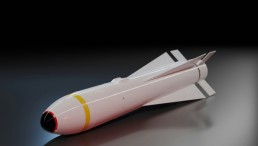Everyone knows that we live in a three-dimensional world which means that our physical realm can be described using three spatial dimensions: length, width and height. But what if our world is not three-dimensional but two-dimensional? How would the building blocks of matter behave in a flat world?
In a 3D realm, only two types of particles exist: bosons and fermions. Bosons refer to the particles of light and force, including the Higgs boson which gives mass to other particles. Meanwhile, fermions are particles of matter that make up everything we see and touch, like protons, electrons, and neutrons.
When it comes to a 2D world, other types of particles exist. They are neither bosons or fermions, but something in between. Called non-Abelian anyons, these quasiparticles have some very strange and fascinating characteristics.
How Do Non-Abelian Anyons Behave?
Non-Abelian anyons are not typical particles. They are rather collective excitations of a special phase of matter which resemble the ripples on the surface of water. They can only exist in a two-dimensional plane where they are allowed to move around each other in a way which cannot be done in 3D.
One of the special properties of non-Abelian anyons is their ability to possess memory. When swapping places, they can recall their previous positions and orientations and this affects their future behavior. Such memory makes non-Abelian anyons topological. This means that they are immune to small disturbances and deformations, making them twisted, stretched, or bent without losing their identity or information.
The possession of memory makes non-Abelian anyons very useful for quantum computing. This technology uses quantum bits in storing and processing information more efficiently than classical bits. However, the practical use of quantum bits, or qubits, is limited because they are fragile and prone to errors.
Meanwhile, non-Abelian anyons can be utilized as robust qubits, with the ability to preserve and manipulate information without losing it to noise or interference. This can allow quantum computing to reach its full potential and address the problems of classical computers.
For several decades, the existence of non-Abelian anyons have been predicted by theory. However, they have never been observed or created in the laboratory.
READ ALSO: Qubit Lifespan Extended by 2.3 Times, a Major Step in Improving Quantum Computing
Creation of a New Phase of Matter
In a recent study, theoretical physicist Ashvin Vishwanathfrom Harvard University achieved a breakthrough in creating and controlling non-Abelian anyons for the first time. The result of the study is discussed in the paper "Non-Abelian topological order and anyons on a trapped-ion processor."
Vishwanath worked with researchers at the quantum company Quantinuum in using a quantum processor, a powerful machine which can manipulate quantum states of matter. They started with a lattice of 27 trapped ions, and then used a technique or partial and targeted measurements to shape the quantum state of the system. This was done until the desired state of non-Abelian topological order was achieved.
The technique allowed the researchers to verify the properties and behavior of non-Abelian anyons. They also demonstrated the possibility of scaling up the system to larger sizes, a property that is vital for quantum computing applications.
RELATED ARTICLE: Brand-New Quantum Computing System Developed For More Effective 'Erasure Error' Corrections
Check out more news and information on Quantum Computing in Science Times.














